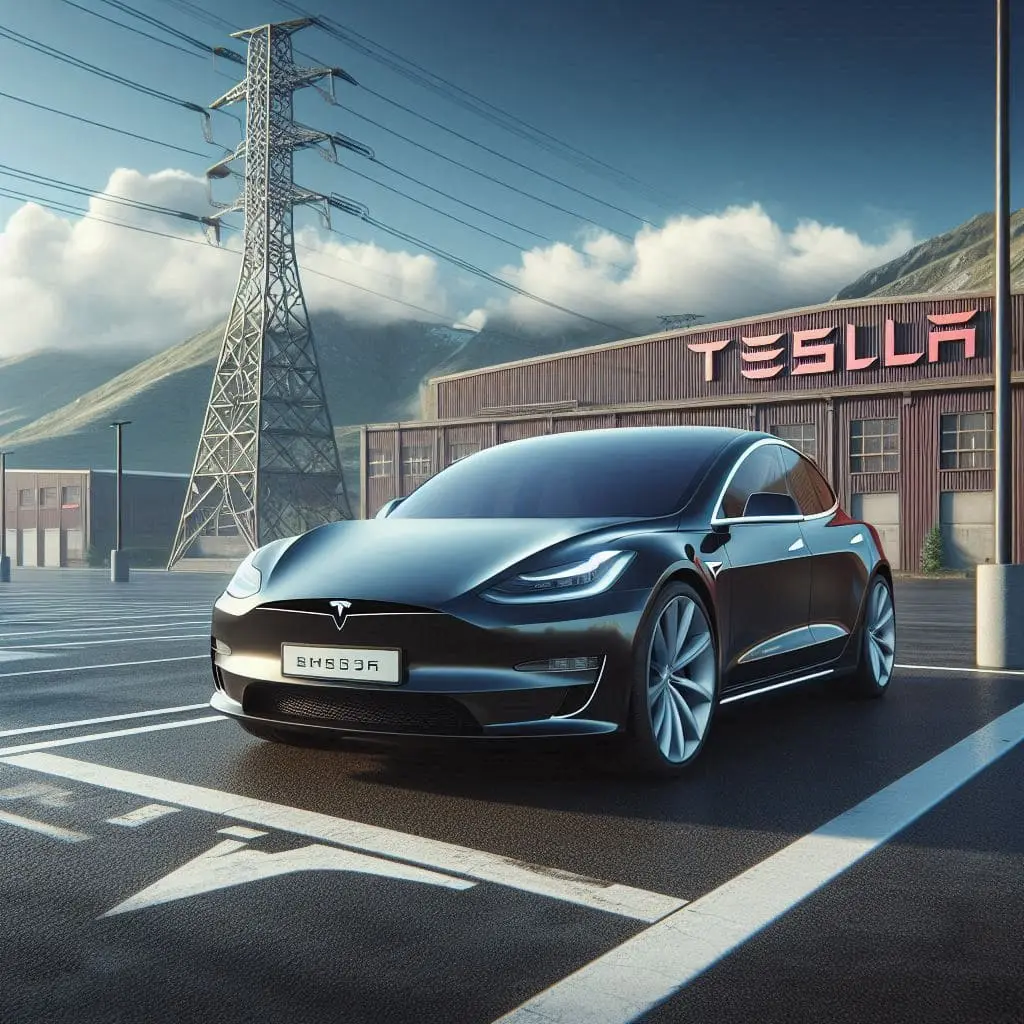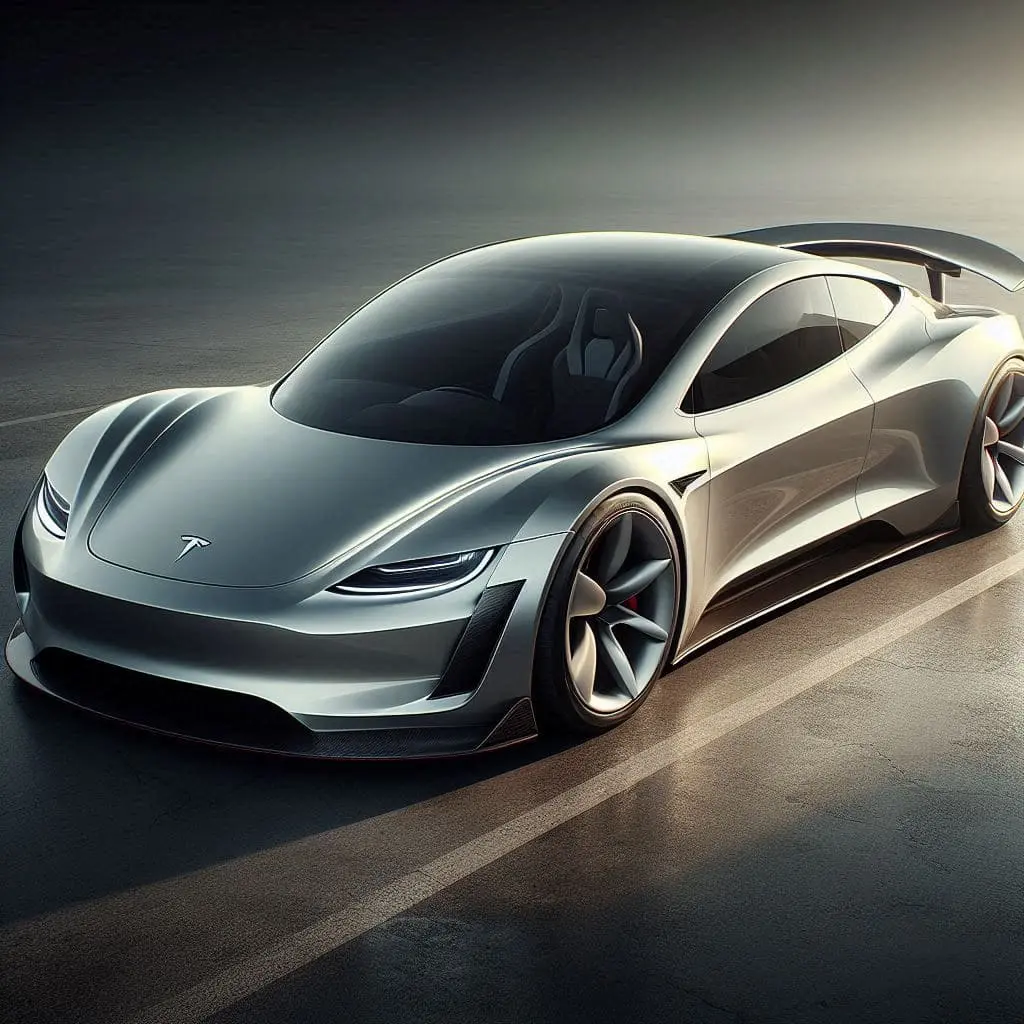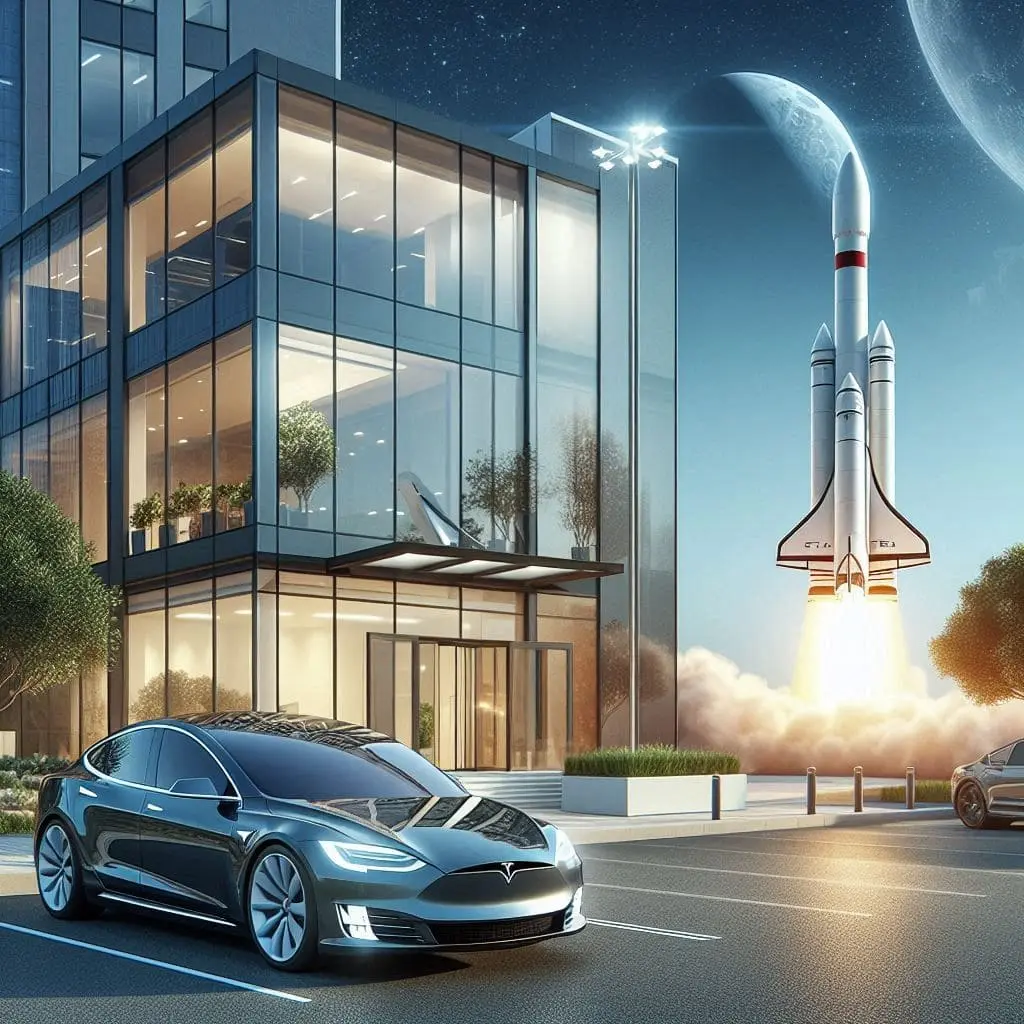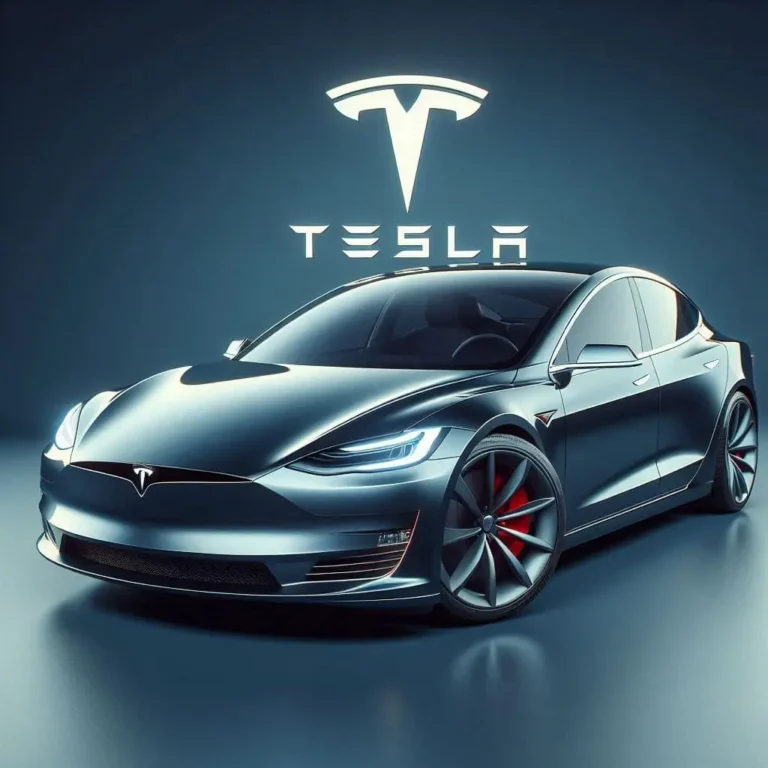Introduction: The Rise of Tesla
Tesla has become a household name, synonymous with innovation, sustainability, and high-performance electric cars. What started as a niche company aimed at making electric vehicles mainstream has turned into a global powerhouse, pushing the boundaries of technology and energy. Tesla’s rise to success wasn’t without its challenges, but through perseverance, bold vision, and groundbreaking innovation, the company has transformed not only the auto industry but the world’s perception of electric mobility.
The Vision Behind Tesla
At the heart of Tesla’s success is its visionary CEO, Elon Musk. Though Tesla was originally founded by engineers Martin Eberhard and Marc Tarpenning in 2003, it’s Musk who truly became the face of the brand. When he joined Tesla in 2004, his mission was clear: to accelerate the world’s transition to sustainable energy.
Elon Musk’s Role in Tesla’s Success
Musk’s leadership was crucial to pushing Tesla through difficult times. His ambitious goals, coupled with his relentless pursuit of innovation, allowed Tesla to thrive when most doubted the viability of electric vehicles (EVs). His belief in a sustainable future became the driving force behind Tesla’s technological advancements and environmental impact.
A Mission to Accelerate the World’s Transition to Sustainable Energy
Tesla isn’t just about electric cars—it’s about transforming the way we produce and consume energy. Musk emphasized from the beginning that Tesla was not merely a car company; it was an energy innovation company. With a clear focus on renewable energy and reducing the world’s reliance on fossil fuels, Tesla began working toward a sustainable future.

Early Challenges and Struggles
However, success didn’t come easily. Tesla faced several roadblocks in its early years, including financial difficulties and production challenges. Many skeptics doubted whether the company would survive, let alone compete with traditional automakers.
The Roadblocks Tesla Faced in its Initial Years
Tesla’s initial struggle was to prove that electric cars could match, or even outperform, traditional gasoline-powered vehicles. The market was skeptical, the production process was costly, and electric cars were viewed as impractical due to limited range and high prices.
Overcoming Production Issues and Financial Struggles
One of the major hurdles Tesla faced was scaling production. Building electric cars required substantial capital investment and infrastructure, both of which Tesla initially lacked. But with Musk’s strategic leadership and a commitment to innovation, Tesla managed to secure enough funding to keep its vision alive.
Breakthrough with the Tesla Roadster
Tesla’s first major breakthrough came in 2008 with the release of the Tesla Roadster. The Roadster was a game-changer because it proved that electric cars could be both fast and practical, with a range of over 200 miles on a single charge—something unheard of at the time.
Introducing the Electric Sports Car Revolution
The Roadster wasn’t just any electric car; it was a high-performance sports car that could go from 0 to 60 mph in under four seconds. This grabbed the attention of car enthusiasts and environmental advocates alike, showing that sustainability didn’t have to come at the cost of performance.

Building a Loyal Customer Base with the Roadster
The release of the Roadster also helped Tesla build a dedicated following of customers who were eager for the future of electric vehicles. This fan base grew as Tesla continued to develop new models, each more innovative than the last.
The Innovation Behind Model S
Tesla’s Model S, introduced in 2012, was the company’s first mass-produced sedan and arguably the turning point in its journey to success. The Model S wasn’t just another electric car—it was a luxury vehicle with cutting-edge technology and a range of over 300 miles per charge.
The Impact of Model S on the Auto Industry
The success of the Model S demonstrated that electric cars weren’t just a niche market but had the potential to disrupt the entire automotive industry. With its sleek design, exceptional performance, and advanced features, it set a new standard for what an electric car could be.
Redefining Luxury and Performance in Electric Vehicles
The Model S offered a unique blend of luxury, speed, and sustainability. It could outperform many gasoline-powered vehicles in both speed and handling, and its minimalist interior design, complete with a massive touchscreen, gave drivers a futuristic experience.
Pioneering Autopilot and Autonomous Driving
Tesla didn’t stop at electric powertrains—it also became a pioneer in autonomous driving technology. Tesla’s Autopilot, introduced in 2014, was the first step towards fully self-driving cars. This innovative technology combined advanced sensors, cameras, and AI to assist drivers with tasks like lane-keeping, acceleration, and braking.
The Journey Towards Full Self-Driving
Tesla has continued to improve its autonomous driving technology over the years, with the ultimate goal of achieving full self-driving capability. While the road to this goal has been met with legal and regulatory hurdles, Tesla remains at the forefront of the autonomous driving revolution.
Legal and Safety Challenges
However, the development of self-driving cars hasn’t been without its challenges. Tesla has faced scrutiny over the safety of its Autopilot system, particularly after a few high-profile accidents. Nonetheless, the company is committed to refining the technology to ensure it’s both safe and reliable.
Expanding the Tesla Lineup: Model X, 3, Y, and Cybertruck
Tesla’s success wasn’t limited to the Model S. Over the years, the company expanded its lineup with the Model X (an SUV), the more affordable Model 3, and the Model Y crossover. Each of these models catered to different segments of the market, broadening Tesla’s appeal.
Catering to Different Market Segments
The introduction of the Model 3, in particular, marked a significant milestone for Tesla. It was the first Tesla vehicle aimed at the mass market, with a starting price below $40,000. This made Tesla’s electric vehicles accessible to a broader audience.
The Bold Design of the Cybertruck
Then came the Cybertruck, Tesla’s most radical design yet. Unveiled in 2019, the Cybertruck shocked the world with its futuristic, angular design. While its aesthetics were polarizing, the truck’s performance and durability were undeniable, further solidifying Tesla’s reputation as an industry disruptor.
The Gigafactories and Their Role in Tesla’s Growth
Tesla’s rapid expansion wouldn’t have been possible without its Gigafactories—massive production facilities designed to scale up the production of both vehicles and batteries. These factories, located in various parts of the world, have played a crucial role in Tesla’s ability to meet growing demand.
Increasing Production Capacity with Gigafactories Worldwide
By building Gigafactories in key regions like the U.S., China, and Europe, Tesla has significantly boosted its production capabilities. These factories are also a testament to Tesla’s commitment to innovation and sustainability, as many of them are powered by renewable energy.
Pushing the Boundaries of Innovation and Sustainability
The Gigafactories aren’t just about quantity; they’re also about quality. Tesla has pushed the boundaries of battery technology and energy efficiency in these facilities, making it a leader in sustainable manufacturing.
Tesla’s Impact on the Electric Vehicle Market
Tesla’s influence on the electric vehicle market cannot be overstated. The company has not only made electric cars cool and desirable but has also pushed traditional automakers to invest in electric vehicles. Today, nearly every major car manufacturer has announced plans to electrify their fleets, thanks in part to Tesla’s success.
Leading the Shift to Electric Cars Globally
Tesla’s success has shown that electric vehicles are not just a fad—they are the future of transportation. Countries around the world are now investing in EV infrastructure, and many are setting goals to phase out internal combustion engines in the coming decades.
Creating a Competitive Market for Electric Vehicles
By leading the charge, Tesla has also fostered healthy competition within the electric vehicle space. Other companies are now developing electric cars that compete with Tesla’s offerings, spurring more innovation and ultimately benefiting consumers.
Tesla Energy: Beyond Cars
But Tesla’s ambitions go beyond automobiles. Through its Tesla Energy division, the company is working to revolutionize the energy industry. Tesla Energy focuses on renewable energy solutions, such as solar panels and battery storage systems like the Powerwall.
The Powerwall and Solar Roof Initiatives
Tesla’s Powerwall is a home battery system designed to store energy generated by solar panels, allowing homeowners to use clean energy even when the sun isn’t shining. The Solar Roof, on the other hand, integrates solar cells into roof tiles, making renewable energy both practical and aesthetically pleasing.
Disrupting the Renewable Energy Sector
These initiatives have the potential to disrupt the traditional energy market by making it easier and more affordable for people to generate and store their own electricity. Just as Tesla has shaken up the auto industry, it is now doing the same in the renewable energy sector.
Financial Success and Stock Market Dominance
Tesla’s financial success has been as remarkable as its technological achievements. In 2020, Tesla became the most valuable automaker in the world, surpassing even giants like Toyota. This was a major milestone, not just for Tesla but for the entire electric vehicle industry.
Tesla’s Impressive Stock Market Growth
Tesla’s stock price has soared in recent years, making it one of the most valuable companies in the world. Investors have been drawn to the company’s potential to revolutionize both the automotive and energy sectors, and Tesla’s market valuation reflects that optimism.
Market Valuation and Tesla’s Influence on Investors
Tesla’s market success has also made it a favorite among retail investors. Many see Tesla as not just a car company, but a technology company with the potential to disrupt multiple industries, from transportation to energy storage.
Overcoming Criticism and Controversies
Despite its many successes, Tesla has faced its fair share of criticism and controversies. From production delays to concerns over the safety of its autonomous driving systems, the company has had to navigate numerous challenges.
Responding to Skeptics and Challenges
Musk has always been quick to address critics head-on. Whether through bold public statements or doubling down on innovation, Tesla has consistently demonstrated its ability to overcome obstacles and emerge stronger on the other side.
Lessons Learned from Failures and Mistakes
While Tesla’s journey has not been without missteps, the company has used each failure as an opportunity to learn and improve. This resilience has been key to its long-term success and will continue to shape its future.
The Global Impact of Tesla
Tesla’s impact extends far beyond its cars. The company has played a pivotal role in raising awareness about climate change and the need for sustainable energy solutions. Tesla’s vision for a greener future has inspired individuals, businesses, and governments to take action.
Tesla’s Role in Climate Change and Environmental Sustainability
By producing zero-emission vehicles and developing renewable energy technologies, Tesla is helping to reduce the world’s reliance on fossil fuels. This, in turn, is contributing to the fight against climate change and the preservation of the planet for future generations.
Changing Perceptions of Electric Cars Around the World
Tesla has also changed the way people think about electric cars. What was once considered a niche product for environmentalists is now seen as the future of transportation. Thanks to Tesla, electric vehicles are no longer a compromise but a superior alternative to gasoline-powered cars.
Future Goals: SpaceX, Tesla, and Beyond
Looking ahead, Tesla has even more ambitious goals. Through his work with SpaceX, Musk envisions a future where Tesla vehicles could be part of a multi-planetary transportation system. The synergies between Tesla and SpaceX highlight Musk’s broader vision for the future of humanity.

Synergies Between Tesla and SpaceX
Musk has often spoken about the ways in which Tesla’s technology can be applied to space travel and vice versa. For example, advancements in battery technology and energy storage could have implications for space exploration, while innovations in rocket propulsion might inspire new developments in electric vehicles.
Tesla’s Long-Term Goals in Space and Energy
In the long term, Tesla’s success in the auto industry and energy sector may just be the beginning. Musk has hinted at even grander plans, including sustainable colonies on other planets and further advancements in clean energy technology. While these goals may seem far-fetched, Tesla’s track record shows that nothing is truly out of reach.
Conclusion: Tesla’s Journey to Revolutionizing Transportation and Energy
Tesla’s story is one of perseverance, innovation, and a bold vision for the future. From its humble beginnings to becoming a global leader in electric vehicles and renewable energy, Tesla has defied the odds and disrupted entire industries. As the world continues to grapple with climate change and the transition to a sustainable future, Tesla’s influence will only grow stronger, inspiring generations to come.
Partnerships Driving Innovation
Tesla’s ability to push the boundaries of technology has been bolstered by strategic partnerships with companies like Arrow Electronics, a global provider of technology solutions. Arrow Electronics plays a critical role in supporting Tesla’s supply chain, offering advanced electronic components and systems that help enhance the performance and efficiency of Tesla’s vehicles. By collaborating with Arrow Electronics, Tesla is able to access cutting-edge materials and innovative solutions, ensuring that its electric vehicles continue to set industry standards in both quality and sustainability. This partnership underscores Tesla’s commitment to leveraging technological expertise to drive forward its mission of sustainable energy and transportation.
FAQs
What was Tesla’s first successful car?
- Tesla’s first successful car was the Roadster, introduced in 2008. It was the first electric vehicle to prove that EVs could be both fast and practical.
How did Tesla overcome its early challenges?
- Tesla overcame early financial and production struggles through strategic leadership, securing investments, and focusing on continuous innovation, especially in battery technology and manufacturing.
What makes Tesla different from other electric car manufacturers?
- Tesla’s unique combination of high-performance vehicles, cutting-edge technology, and a strong focus on sustainability sets it apart from other car manufacturers.
How has Tesla influenced the renewable energy industry?
- Tesla has disrupted the renewable energy sector with products like the Powerwall and Solar Roof, making it easier for homeowners to adopt clean energy solutions.
What does the future hold for Tesla?
- Tesla’s future includes continued advancements in autonomous driving, expanding its energy products, and possibly even contributing to space travel through synergies with SpaceX








